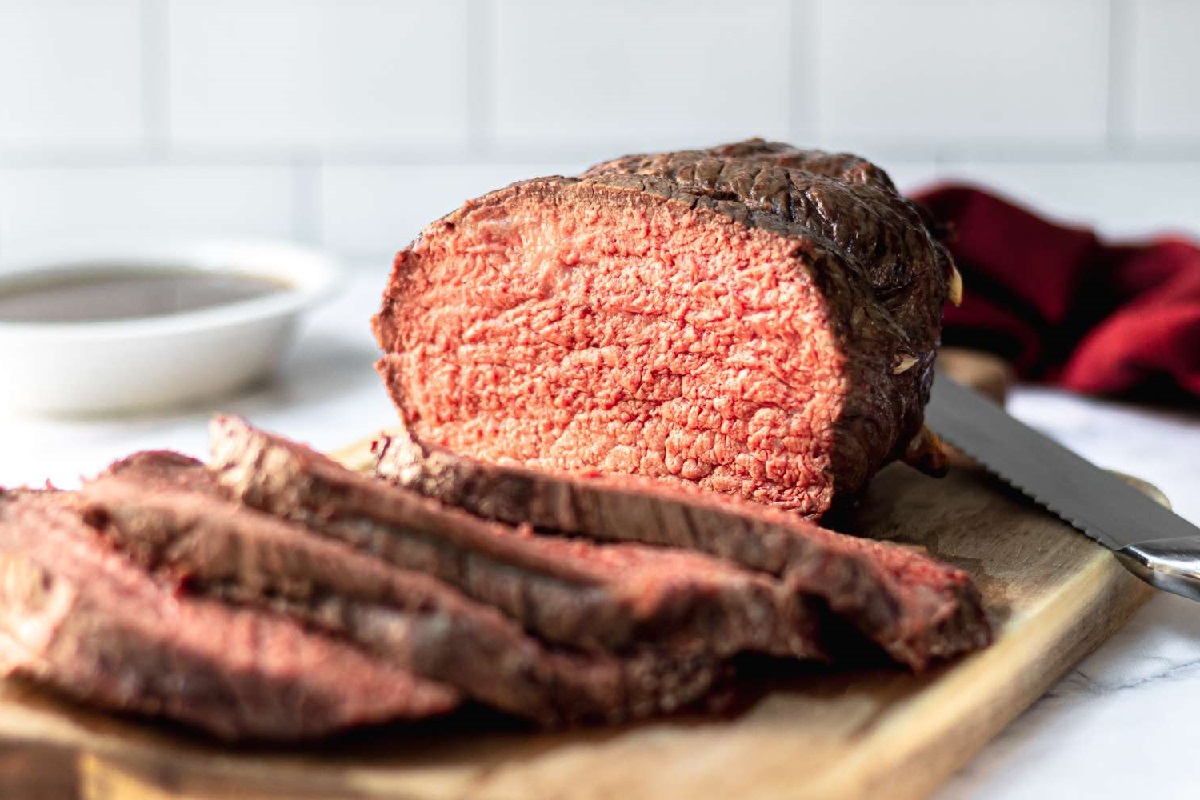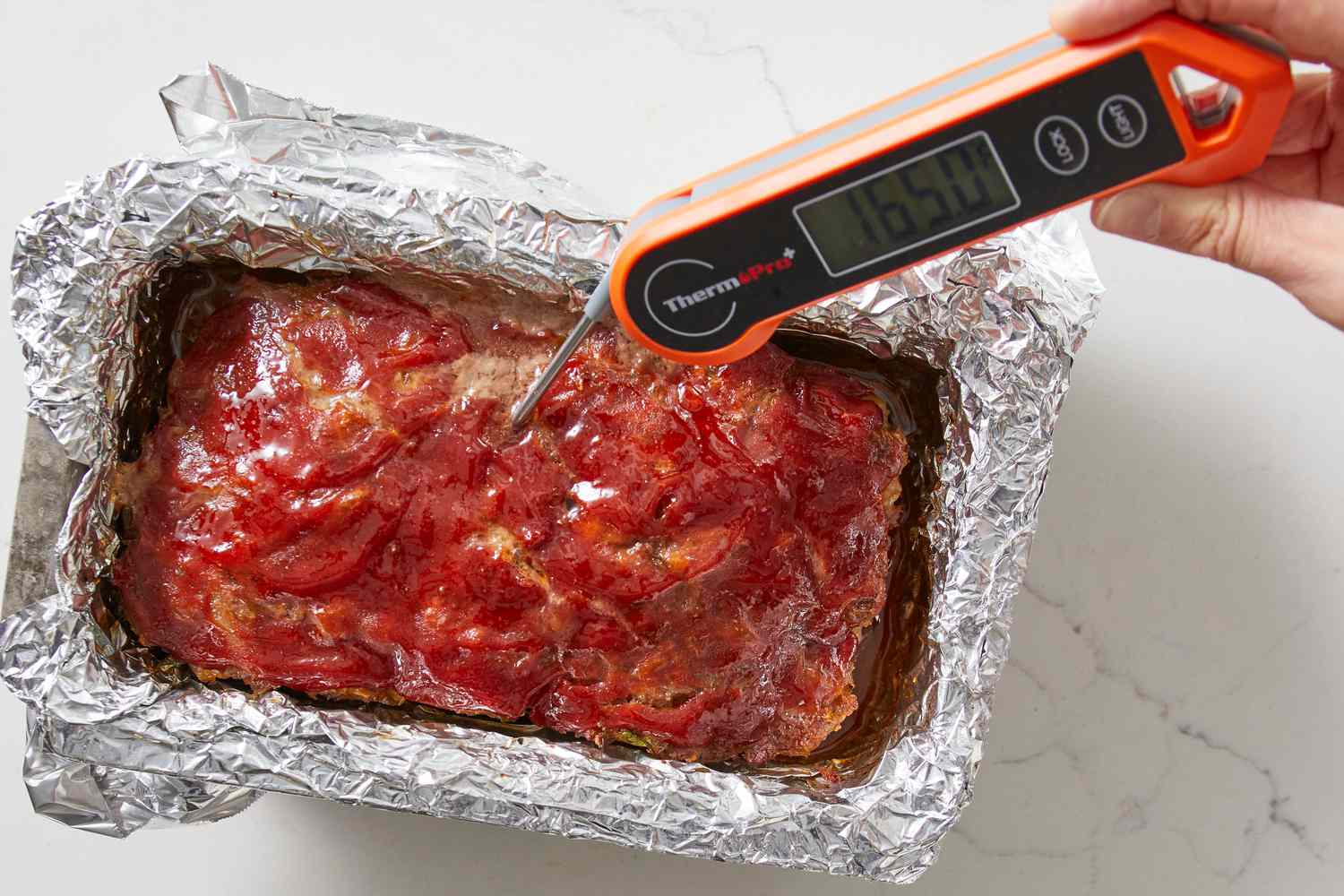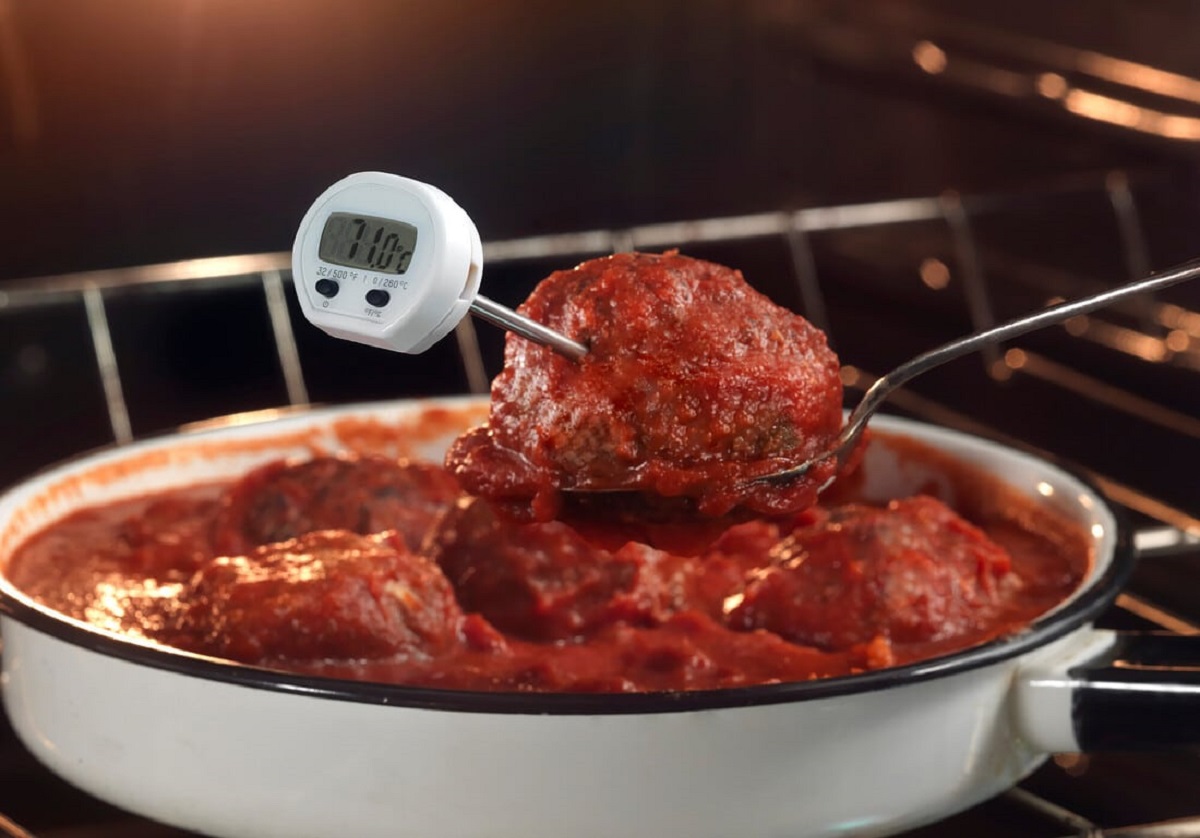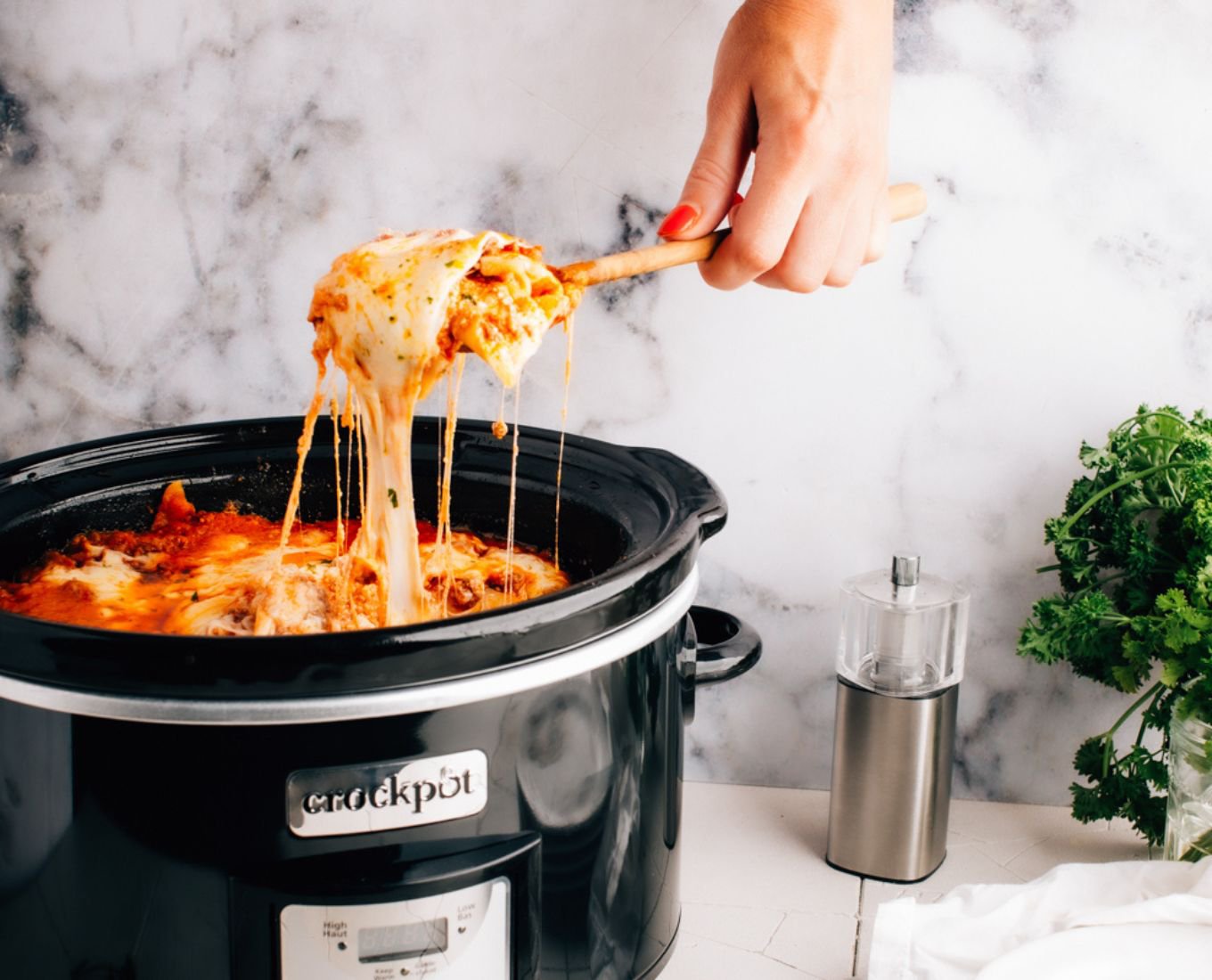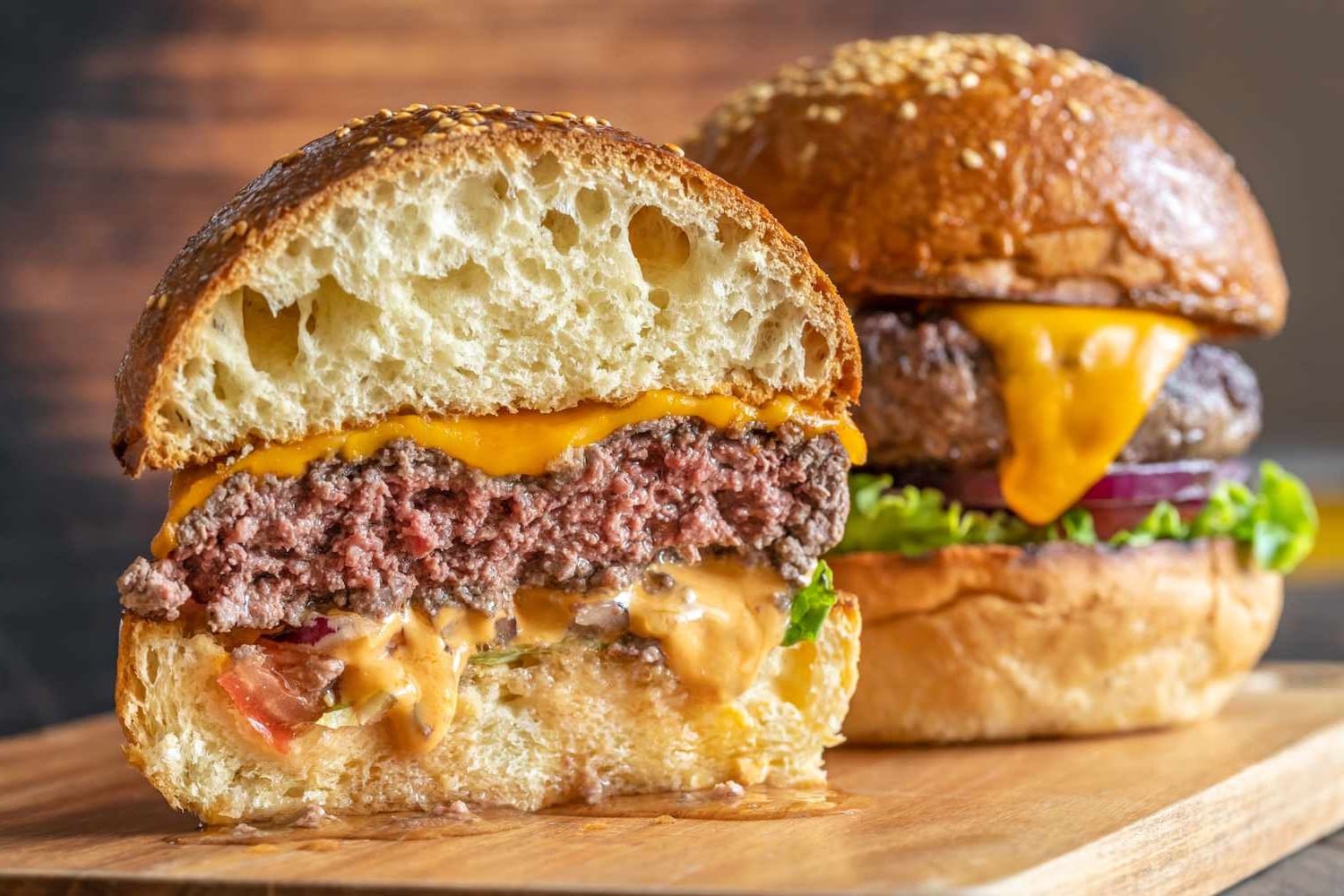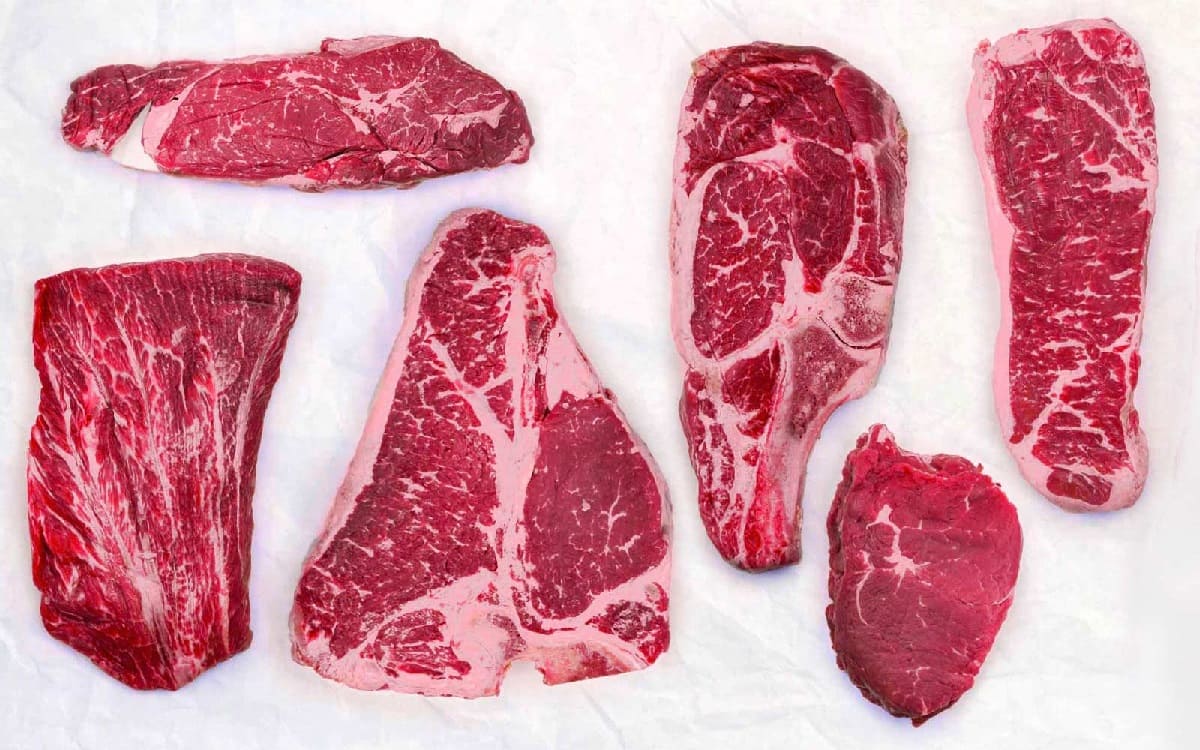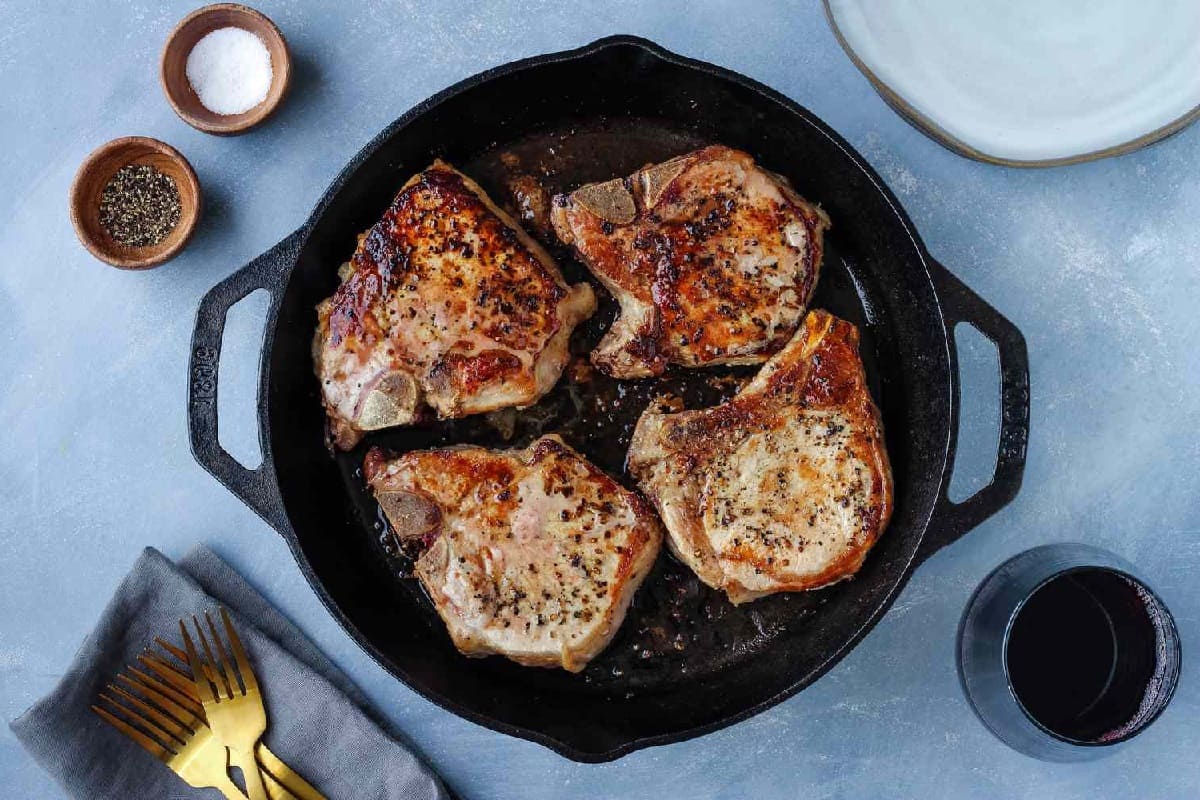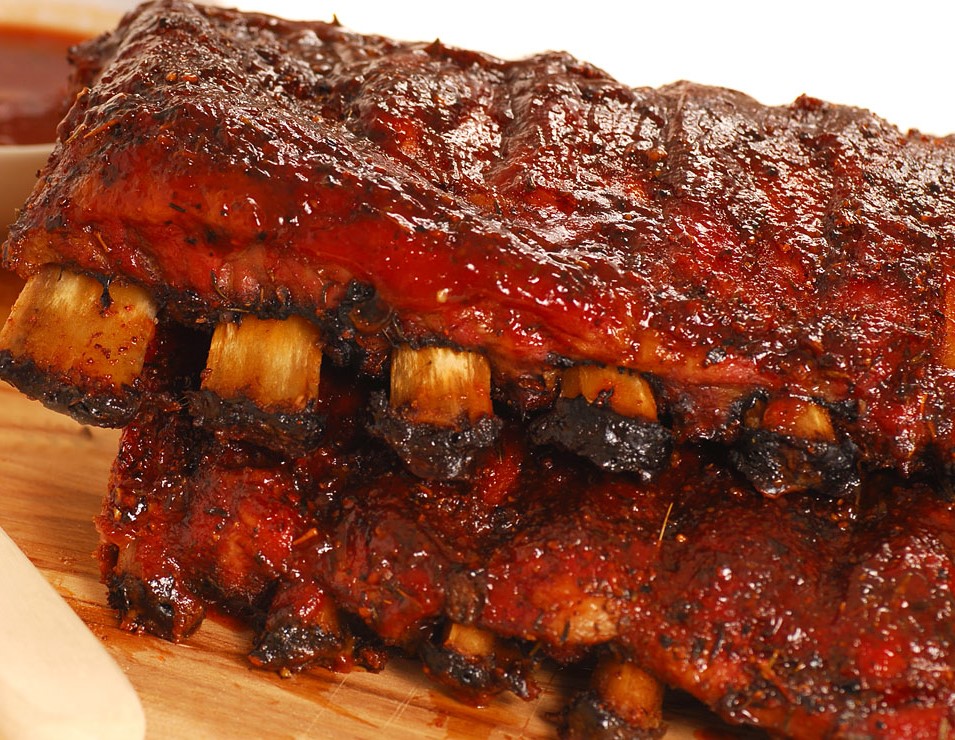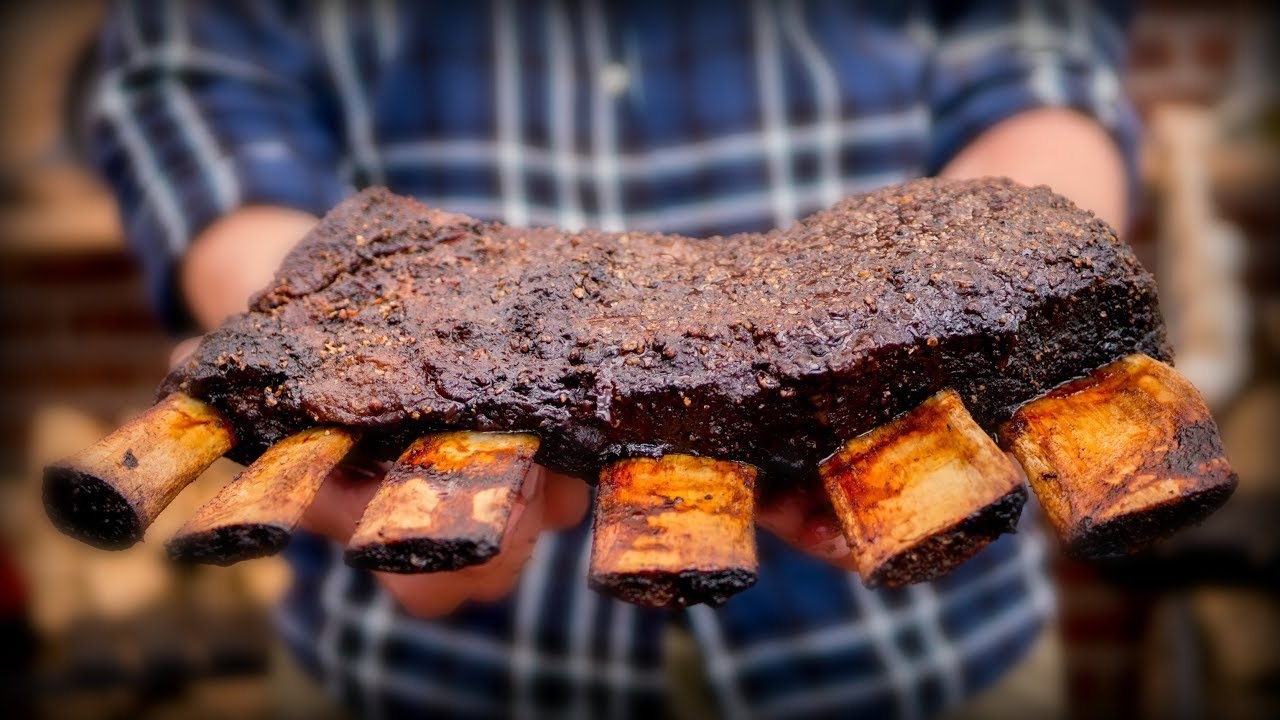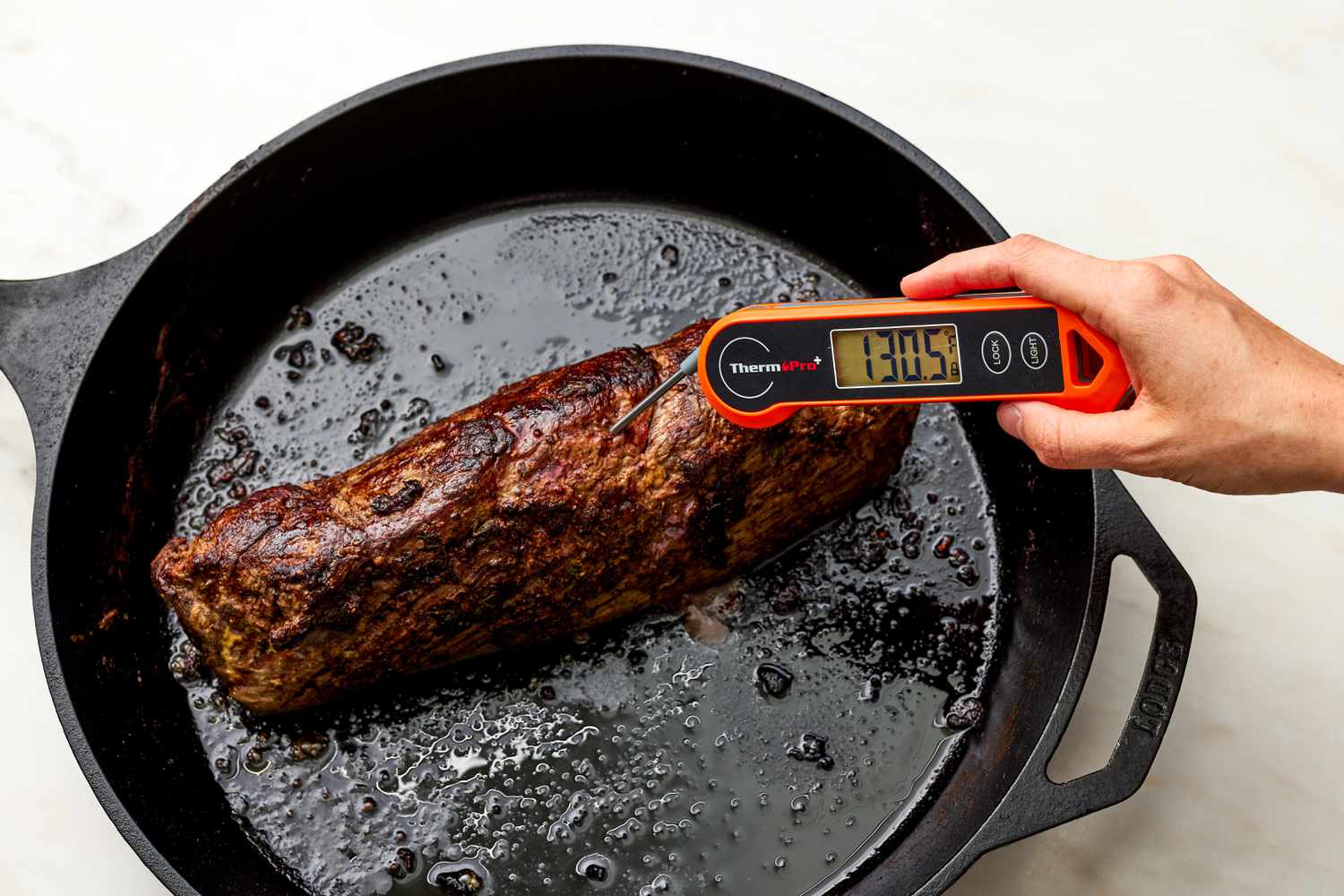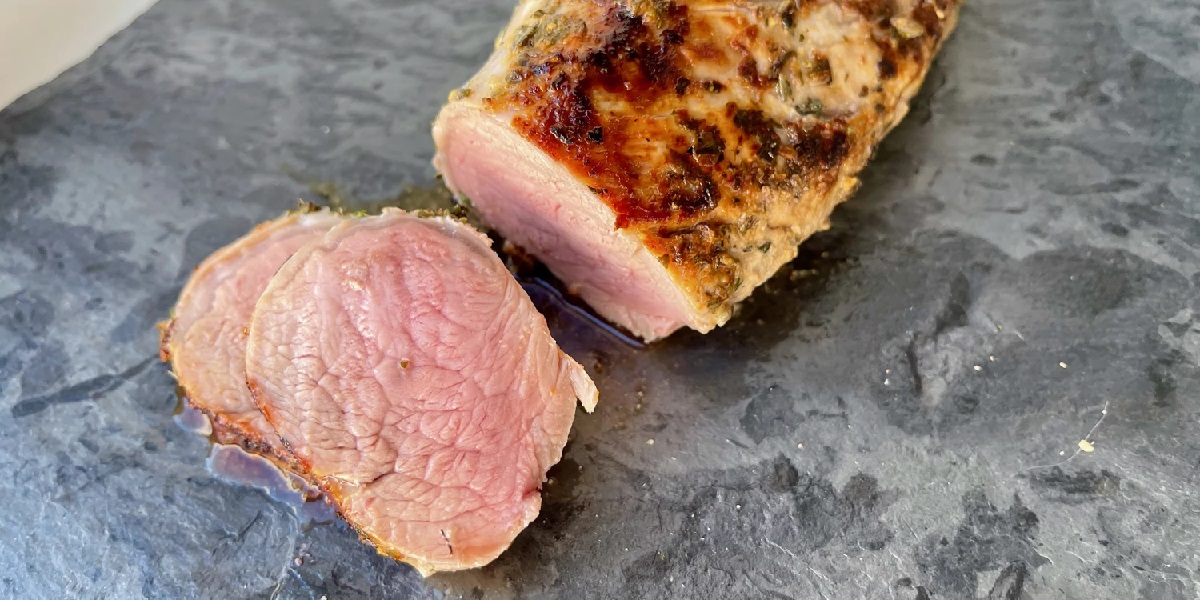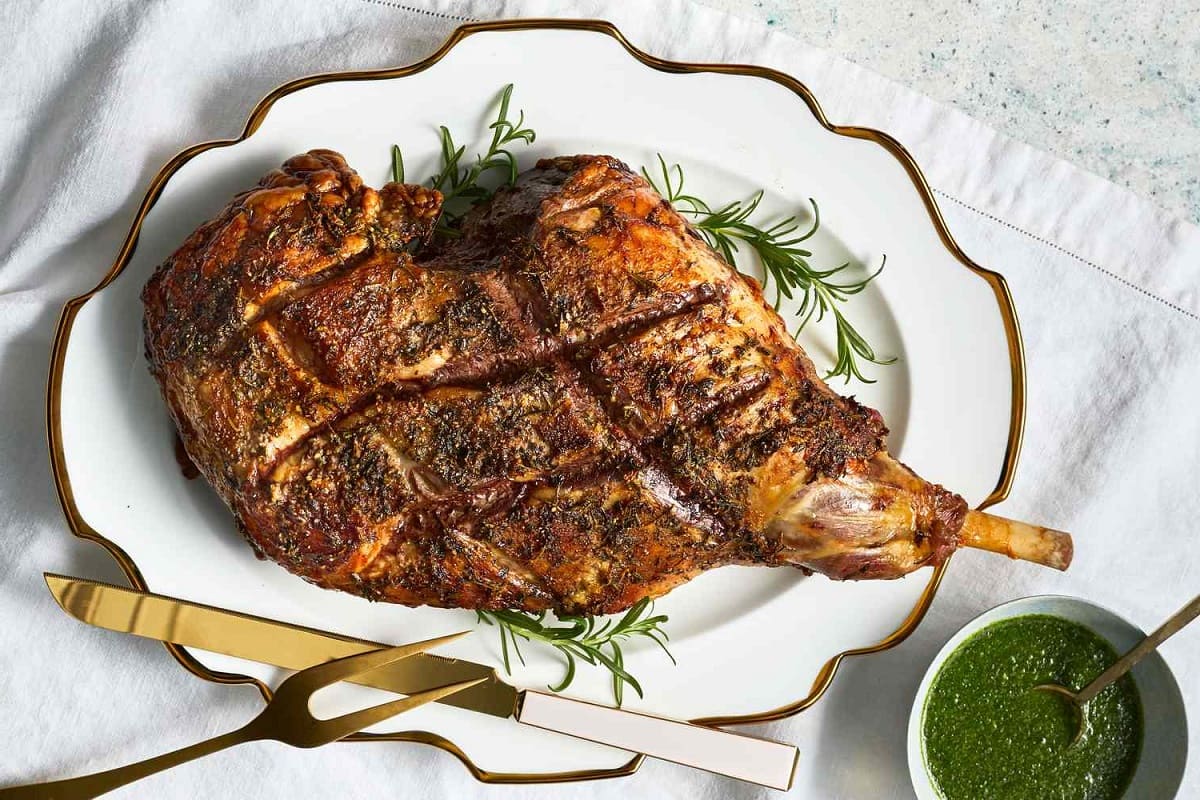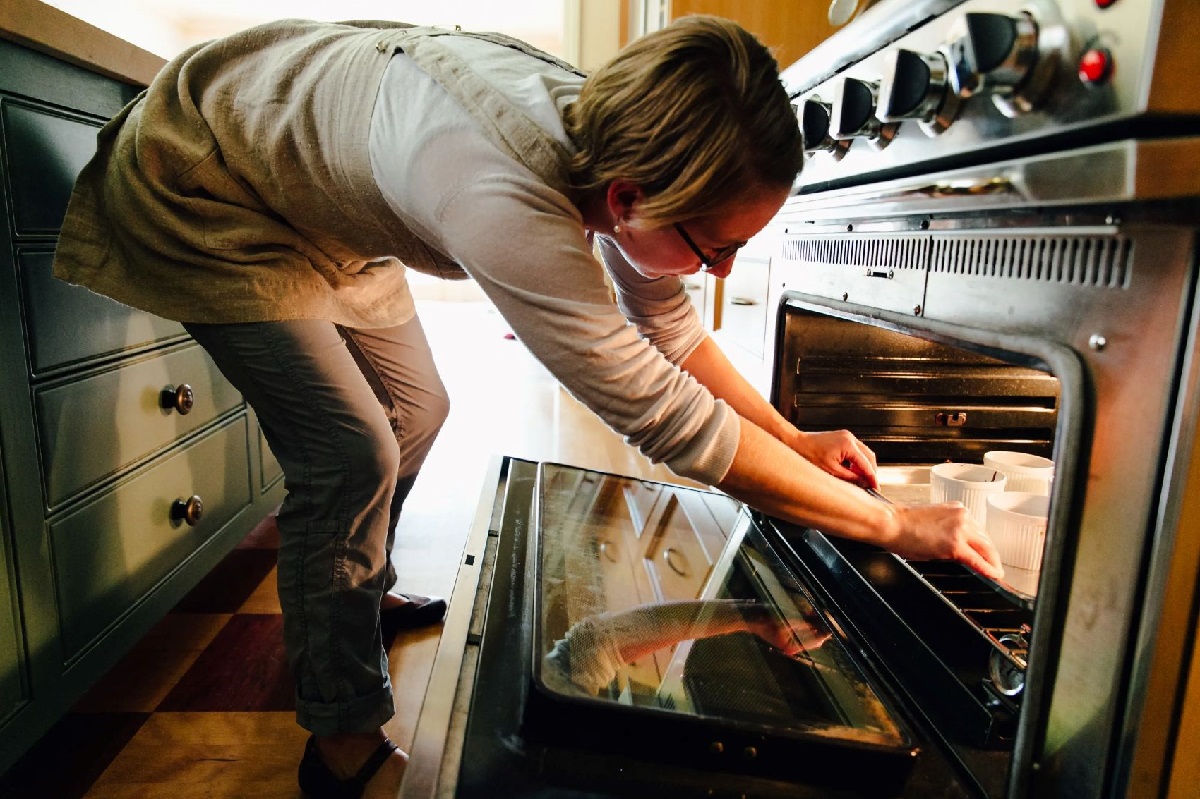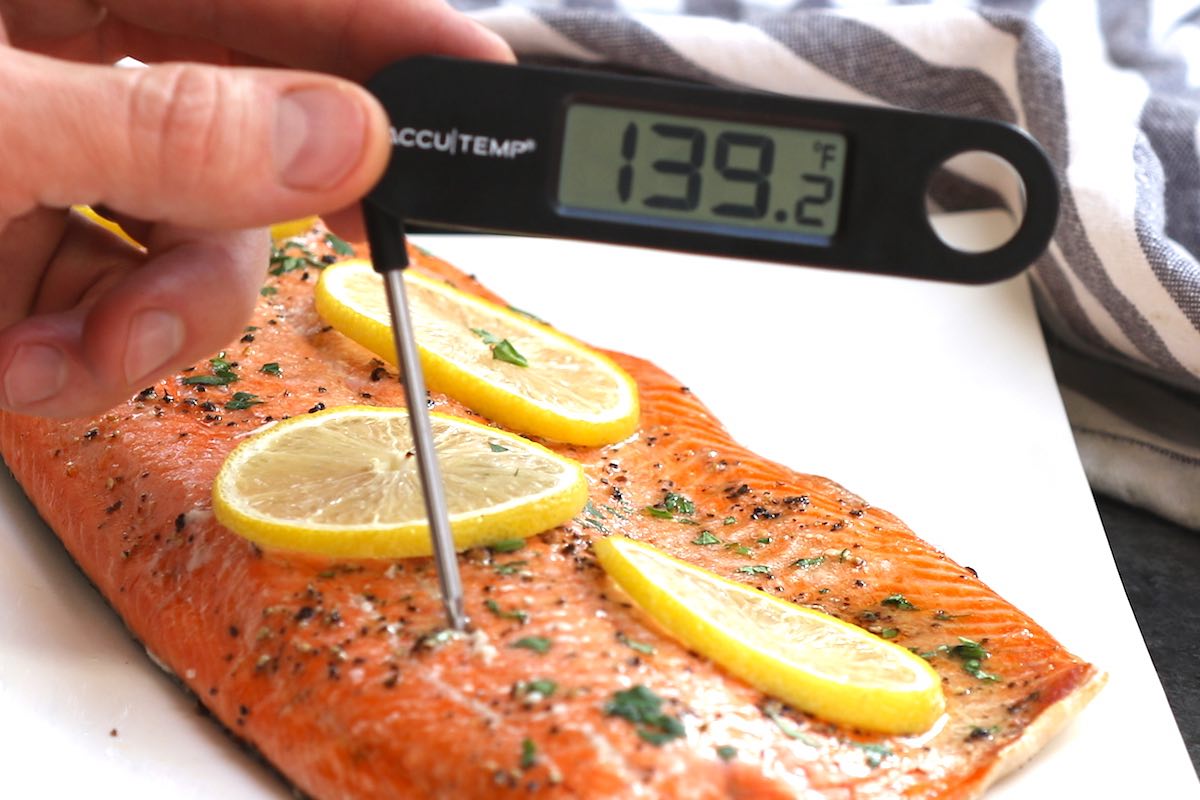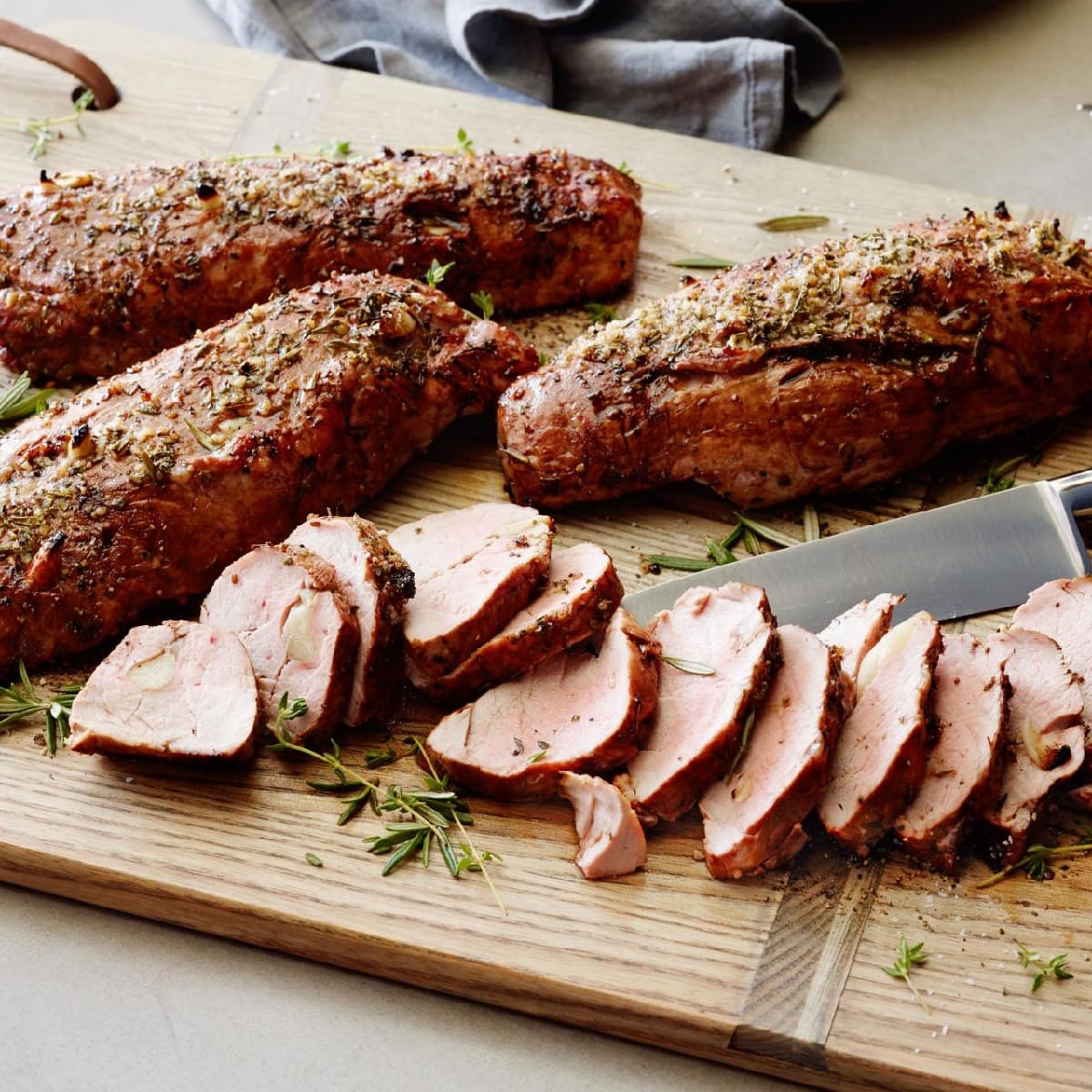Home>Culinary & Beverages>Optimizing Ground Beef Temperature For Cooking
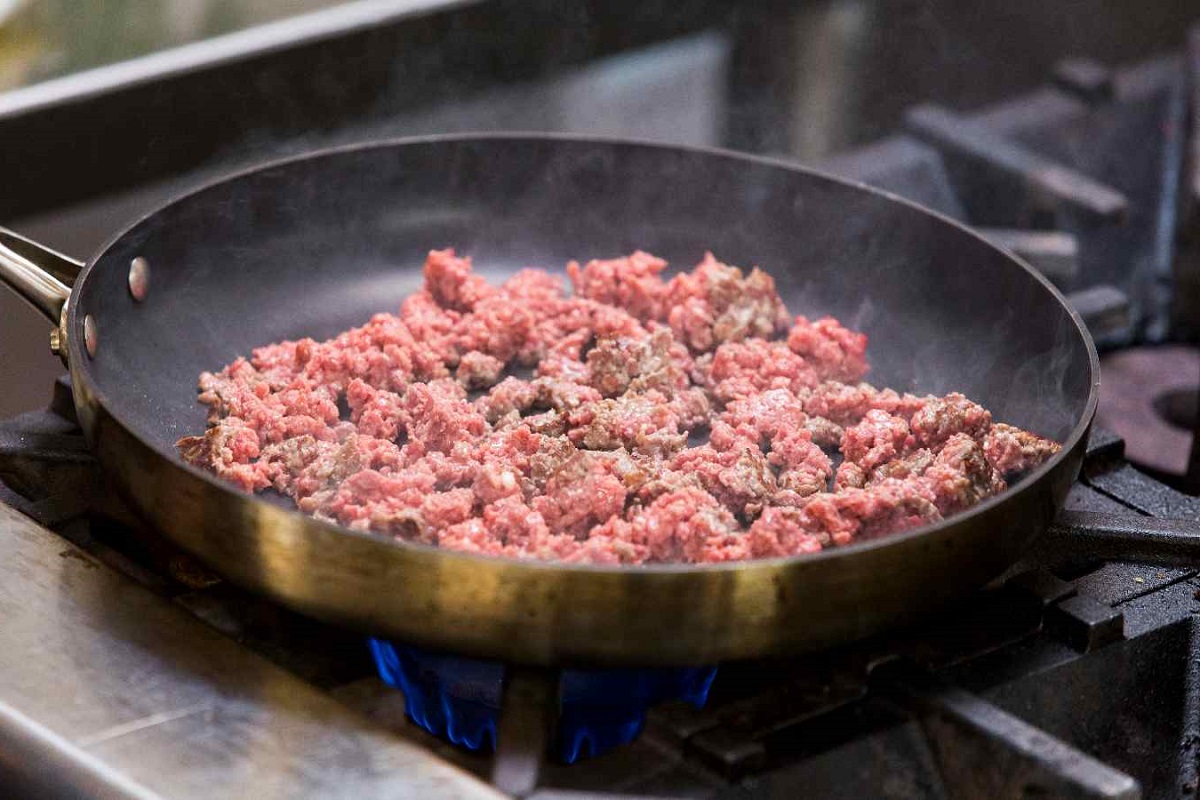

Culinary & Beverages
Optimizing Ground Beef Temperature For Cooking
Published: February 22, 2024
Learn the best ground beef temperature for safe and delicious cooking. Get expert tips on culinary and beverages for perfect results.
(Many of the links in this article redirect to a specific reviewed product. Your purchase of these products through affiliate links helps to generate commission for Temperatures.com, at no extra cost. Learn more)
Table of Contents
Understanding Ground Beef Temperature
Understanding the temperature of ground beef is crucial for ensuring safe and delicious cooking results. The internal temperature of ground beef directly impacts its safety and taste, making it essential to comprehend the significance of temperature control during the cooking process.
Ground beef temperature refers to the internal heat level of the meat, which is a critical factor in determining its doneness and safety for consumption. The U.S. Department of Agriculture (USDA) recommends cooking ground beef to a minimum internal temperature of 160°F (71°C) to destroy harmful bacteria, such as E. coli and Salmonella, ensuring that the meat is safe to eat.
When ground beef reaches the recommended temperature, it not only becomes safe for consumption but also achieves the desired level of doneness. This is particularly important for dishes like burgers, meatballs, and meatloaf, where the texture and flavor of the ground beef significantly impact the overall culinary experience.
By understanding ground beef temperature, cooks can effectively gauge the level of doneness they desire, whether it's medium-rare, medium, or well-done. This knowledge empowers them to tailor their cooking methods to achieve the perfect balance of juiciness and tenderness in the ground beef, elevating the dining experience for themselves and their guests.
In essence, comprehending ground beef temperature is fundamental for both food safety and culinary excellence. It enables cooks to navigate the fine line between undercooked and overcooked meat, ensuring that each dish featuring ground beef is not only safe to eat but also a delight to savor.
Read more: Optimal Temperature For A Medium Rare Steak
Factors Affecting Ground Beef Temperature
The temperature of ground beef is influenced by various factors that play a pivotal role in determining the cooking process and the final outcome of the dish. Understanding these factors is essential for achieving the desired level of doneness and ensuring food safety.
-
Initial Temperature: The initial temperature of the ground beef before cooking significantly impacts the cooking time and the final internal temperature. Ground beef that is closer to room temperature will cook more evenly and require less time to reach the desired internal temperature compared to meat that is straight out of the refrigerator.
-
Thickness of the Patty: The thickness of the ground beef patty or the meatball affects the time it takes to cook through. Thicker patties will take longer to reach the recommended internal temperature, while thinner ones may cook more quickly. It's important to consider the thickness when determining the cooking time and temperature.
-
Cooking Method: The cooking method employed, whether grilling, pan-frying, or baking, can impact the ground beef temperature. Each method has its own set of temperature and timing considerations, influencing how the heat is transferred to the meat and ultimately affecting the internal temperature.
-
Heat Source: The type and intensity of the heat source, such as a gas grill, charcoal grill, or stovetop, can affect the rate at which the ground beef cooks. Understanding the heat source is crucial for adjusting cooking times and temperatures to achieve the desired level of doneness.
-
Resting Time: Allowing the cooked ground beef to rest after removing it from the heat source is essential for the redistribution of juices and heat within the meat. The resting time can impact the final internal temperature and overall juiciness of the ground beef.
-
Altitude: Cooking at high altitudes can affect the boiling point of water, which in turn impacts the cooking temperature of ground beef. Understanding the altitude at which cooking takes place is important for making necessary adjustments to cooking times and temperatures.
By considering these factors, cooks can optimize the ground beef temperature, ensuring that it is not only safe for consumption but also achieves the desired level of doneness and flavor. Each factor plays a crucial role in the cooking process, highlighting the importance of understanding and managing them effectively to create delectable dishes featuring ground beef.
Importance of Optimizing Ground Beef Temperature
Optimizing ground beef temperature holds immense significance in the culinary realm, impacting both food safety and the overall dining experience. By adhering to recommended cooking temperatures, individuals can safeguard against foodborne illnesses caused by harmful bacteria commonly found in raw meat. Achieving the ideal internal temperature of ground beef, typically 160°F (71°C), ensures the destruction of pathogens, such as E. coli and Salmonella, rendering the meat safe for consumption.
Beyond food safety, optimizing ground beef temperature is pivotal for delivering a gastronomic delight. Cooking ground beef to the recommended temperature not only guarantees its safety but also influences the texture, juiciness, and flavor of the final dish. Whether crafting succulent burgers, savory meatballs, or flavorful meatloaf, the attainment of the perfect internal temperature is paramount for creating a culinary masterpiece that tantalizes the taste buds.
Furthermore, optimizing ground beef temperature allows for the customization of doneness levels, catering to individual preferences. Whether aiming for a medium-rare, medium, or well-done outcome, precise temperature control empowers cooks to achieve the desired level of tenderness and juiciness in their ground beef creations. This attention to detail elevates the dining experience, ensuring that each bite is a harmonious blend of flavor and succulence.
Moreover, by optimizing ground beef temperature, cooks can exhibit their culinary prowess, presenting dishes that are not only visually appealing but also consistently safe and delectable. This attention to detail reflects a commitment to excellence, enhancing the overall dining experience and leaving a lasting impression on diners.
In essence, the importance of optimizing ground beef temperature cannot be overstated. It is a fundamental aspect of culinary expertise, intertwining food safety with the art of flavor and texture mastery. By prioritizing precise temperature control, cooks can ensure that every dish featuring ground beef is a testament to both safety and culinary excellence.
Methods for Checking Ground Beef Temperature
Ensuring the proper internal temperature of ground beef is essential for both food safety and culinary excellence. To achieve this, various methods can be employed to accurately check the temperature of the meat. Each method offers its own advantages and can be utilized based on individual preferences and cooking circumstances.
-
Instant-Read Thermometer: This method is widely regarded as the most accurate and reliable way to check the internal temperature of ground beef. An instant-read thermometer provides quick and precise readings, allowing cooks to determine the doneness of the meat with confidence. To use this method, insert the thermometer probe into the thickest part of the ground beef, ensuring that it does not touch any bone or the cooking surface. Once the temperature stabilizes, the reading indicates the internal temperature of the meat.
-
Thermometer Fork: A thermometer fork combines the functionality of a cooking fork with an integrated thermometer. This convenient tool allows for easy checking of the ground beef temperature while also providing the ability to handle and flip the meat during the cooking process. By inserting the fork into the meat and activating the thermometer function, cooks can swiftly assess the internal temperature, making it a practical option for those who prefer a multifunctional kitchen tool.
-
Thermocouple Thermometer: The thermocouple thermometer offers rapid temperature readings and is suitable for checking the doneness of ground beef. This type of thermometer utilizes a sensor to measure temperature and is designed for quick response times, making it an efficient choice for assessing the internal temperature of the meat. By inserting the thermocouple probe into the ground beef, cooks can swiftly obtain an accurate reading, allowing for precise temperature control during the cooking process.
-
Color and Texture: While not as precise as using a thermometer, assessing the color and texture of the ground beef can provide a general indication of doneness. Ground beef that is fully cooked to the recommended temperature of 160°F (71°C) typically loses its pink or red hue and exhibits a firm texture. However, relying solely on visual and textural cues may not guarantee the accuracy of the internal temperature, making it essential to complement this method with a reliable thermometer for food safety.
By familiarizing themselves with these methods for checking ground beef temperature, cooks can confidently navigate the cooking process, ensuring that the meat reaches the recommended internal temperature for both safety and culinary perfection. Each method offers its own advantages, catering to diverse cooking preferences and requirements, ultimately contributing to the creation of safe, succulent, and flavorful ground beef dishes.
Tips for Achieving the Perfect Ground Beef Temperature
-
Use a Meat Thermometer: Invest in a reliable meat thermometer to accurately gauge the internal temperature of ground beef. An instant-read thermometer is particularly handy for quick and precise readings, ensuring that the meat reaches the recommended 160°F (71°C) for optimal safety and doneness.
-
Avoid Flattening the Patty: When shaping ground beef into patties for burgers, refrain from pressing or flattening them excessively. Overworking the meat can lead to uneven cooking and loss of juices, affecting the overall texture and moisture of the cooked patty.
-
Create an Indentation: Before cooking ground beef patties, create a slight indentation in the center using your thumb. This simple technique helps the patty maintain an even thickness during cooking, promoting uniform heat distribution and consistent doneness.
-
Allow for Resting Time: After cooking, allow the ground beef to rest for a few minutes before serving. This resting period enables the redistribution of juices within the meat, enhancing its overall juiciness and tenderness.
-
Consider Thickness and Cooking Method: Adjust cooking times and methods based on the thickness of the ground beef and the chosen cooking technique. Thicker patties may require lower heat and longer cooking times, while thinner ones may cook more quickly.
-
Avoid Constant Flipping: When cooking ground beef, refrain from continuously flipping the meat. Allow each side to cook undisturbed for a few minutes to promote even browning and consistent internal temperature.
-
Use High-Quality Ground Beef: Opt for high-quality ground beef with an ideal fat-to-lean ratio. Quality meat not only enhances flavor but also contributes to a more consistent cooking process, resulting in a delectable and evenly cooked final dish.
-
Consider Carryover Cooking: Account for carryover cooking, where the internal temperature of the meat continues to rise after it is removed from the heat source. To prevent overcooking, aim to remove the ground beef from the heat when it is a few degrees below the desired final temperature.
-
Practice Safe Thawing: When thawing frozen ground beef, utilize safe methods such as refrigeration or cold-water baths to prevent bacterial growth and ensure that the meat thaws evenly, promoting uniform cooking.
-
Experiment with Seasonings: Enhance the flavor of ground beef dishes with a variety of seasonings and spices. However, avoid adding salt directly to the meat before cooking, as it can draw out moisture and affect the texture of the cooked ground beef.
By incorporating these tips into your cooking routine, you can elevate the preparation of ground beef dishes, ensuring that they are not only safe for consumption but also consistently delicious and satisfying.
